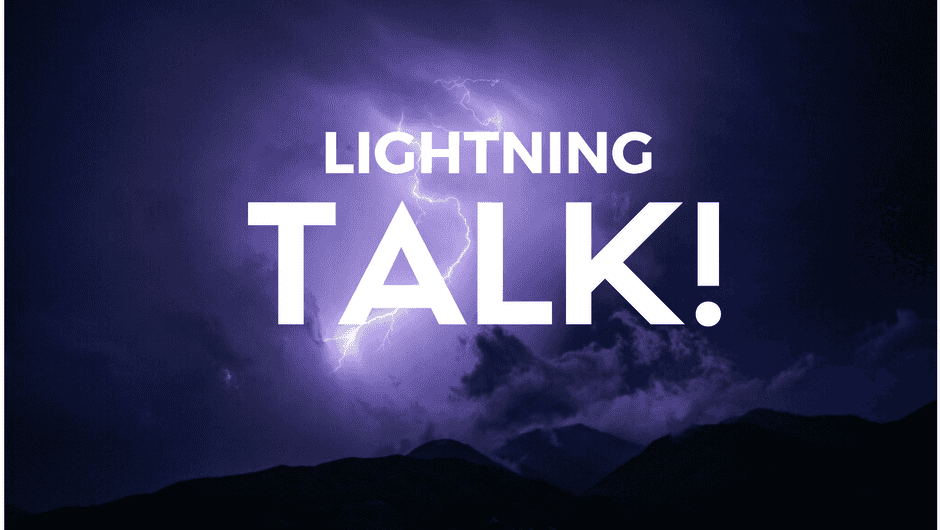Giving a 10 Minute Lightning Talk
Recently, I gave a 10 minute lightning talk on moving from Elixir to Ruby. You can find a link to a copy of the slides on SpeakerDeck.
It was my first lightning talk ever and it was in a new meetup group I recently joined. Naturally, I was a bit nervous. So if you’ve ever been curious about giving a lightning talk at your local technology meetup, here’s a write up of my experience and the process I followed.
Step 1 – Come up with the idea
Since this was my first talk and I didn’t know that much about Elixir, I decided to try and do a talk aimed at people new to the language. I wanted to share some of the experiences I had working through the language.
I thought about doing something purely on the syntax of Elixir. But I didn’t think a talk called “Elixir Syntax” would be that interesting. Also, I didn’t want the talk to be a rehash of what people could find in the documentation.
So I tried to find a “spin” on the topic…
Step 2 – Put a “spin” on the idea that makes it unique
Since my primary programming language was Ruby, I decided to talk about my own experience of trying to learn Elixir coming from Ruby.
This added the niche factor that I thought would help make it a bit more interesting to folks. It also didn’t hurt that I had written a blog post about Elixir basics for a Rubyist.
Since I was working full-time, I thought this would help cut down on the preparation time.
Step 3 – Slide preparation
For preparing the slides, I decided to use the Reveal.JS presentation framework.
It’s a pretty popular open source project and I knew there was probably already a fair amount of tutorials and templates I could use in case I ran into issues or needed a nice styleized template.
For images, it takes time to find them and format them. Two free services I like are unsplash for still photos and giphy for animated ones.
When I can’t find anything on either of those, I like to use Photodune for more professional images. It’s saved me a lot of time to be able to just type “programming” in the search box and get back a list of related images.
Step 4 – Talk Preparation
Having been a part of the Toastmaster organization at one point, I’ve had to give prepared talks and so I know it can take more time than you think it will.
I also searched Google and found tips such as “delivery is more important than content from the Software Sustainability Institute website. That’s something I also learned from Toastmasters.
The next thing I did was rehearse the presentation after work a few times. This was important for a couple of reasons.
The first is timing. I time the talk to see if it’s approximately 10 to 12 minutes. Fortunately, it was within that time range.
The second thing is slide flow. What do I mean by slide flow?
Slide flow is how it looks to the audience. How do the bullets animate and pop into the screen? How do the images look adjacent to the text? Do I have too many bullet points on one slide?
What I Would Do Differently
So those are the 4 steps I used to prepare my first lightning talk. If I were to do things differently, I might try doing the following.
Lesson 1 – Try to pick a more technical topic that uses more Erlang type topics
I like to use talks as a vehicle for my own learning. Going forward, I would like to tackle more technical topics. For instance, I might give a talk that talks or uses a bit more Erlang concepts.
Lesson 2 – Try to have more highs and lows (“drama”)
The other thing I might do differently is to have more highs and lows in the talk. This would help create more “drama” within the flow of the talk. I’d like to think this would help keep the audience more interested so I don’t end up droning on and on.
Lesson 3 – Not go as fast and break down the content more
A couple of people said they found the talk a bit too fast-paced. I can believe this as I have a tendency to talk fast when I get nervous. I also thought the content was basic enough that I was worried people would get bored if I stayed too long on one slide.
But since I targeted the talk to newer folks, it actually makes sense that they wanted me to slow down and spend more time on topics.
Summary
Giving a lightning talk comes down to preparation and audience engagement. I look forward to trying a few more and reporting on the results of the experiment.

